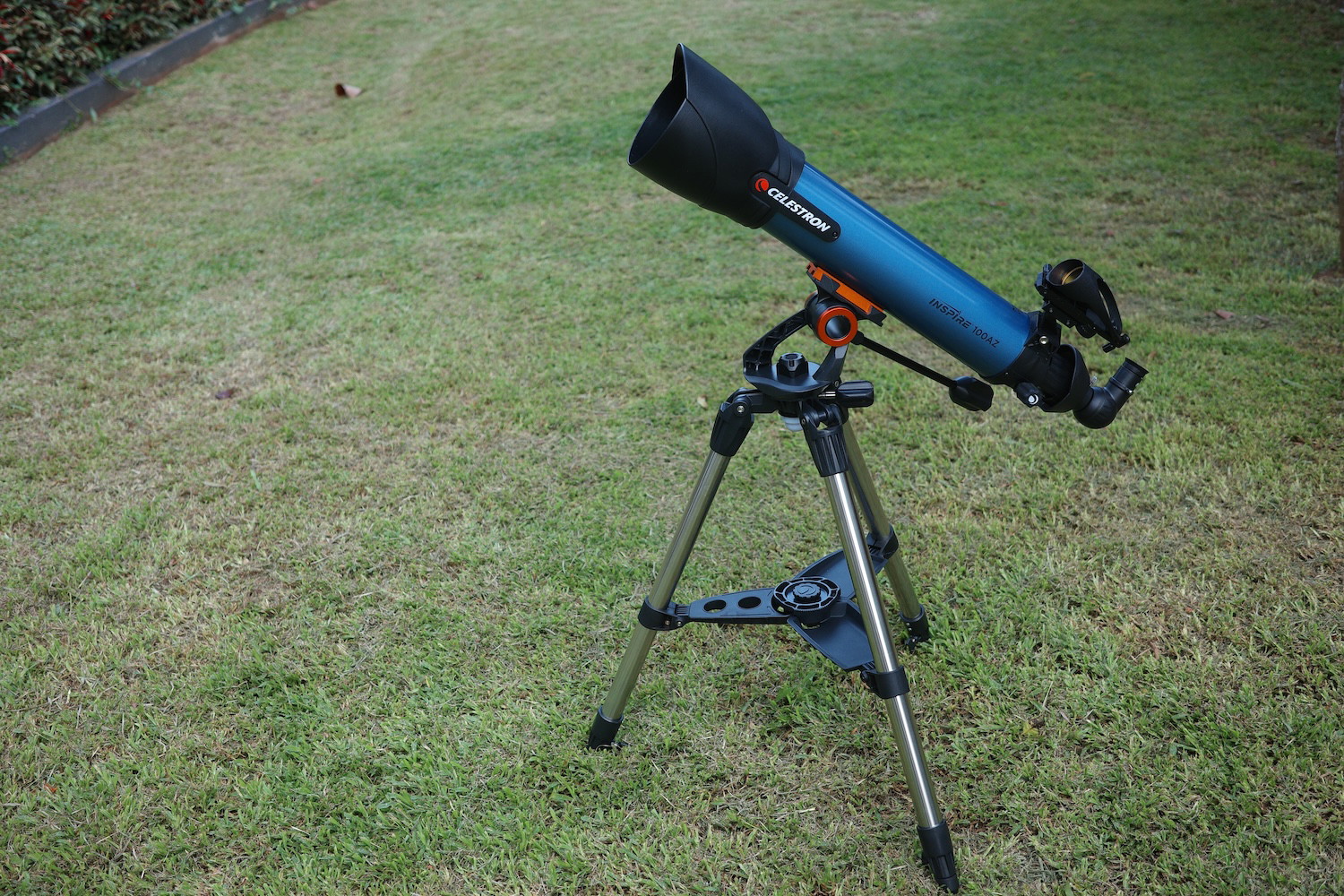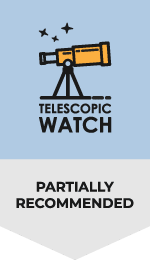Distinct Characteristics of Its Optical Tube
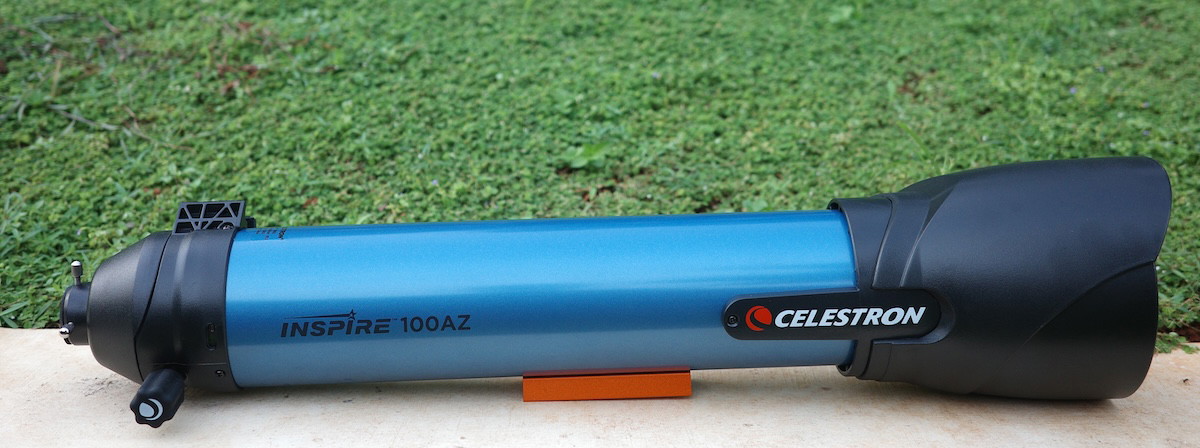
The Inspire 100AZ’s optical tube is a 100mm aperture refractor with a focal ratio of f/6.6 and a focal length of 660mm—or so they say.
But what I do know is that Celestron just stopped down a 102mm f/6.5 slightly to 100mm f/6.6 because the design of the front of the telescope slightly differs from the norm. This small design difference doesn’t change how well the telescope works, but I’m still pointing it out to show that there are other things that are different from the norm.

The dew shield, which is sometimes called a “lens hood,” and the rest of the front of the Inspire 100AZ are all made of black molded plastic. What caught my attention is that the dew shield is a bit short for the telescope and the injection-molded plastic surface on the inside is quite shiny. To improve contrast and reduce glare in such cases, I typically install some adhesive-backed black velvet “flocking” or use coarse sandpaper on the dew shield before applying flat black paint. This is especially important when observing bright objects or under light-polluted skies, which I’m unfortunate enough to be stuck in.
The Good Optical Performance
Being a larger 100mm achromat refractor with a relatively fast focal ratio of f/6.6 (by refractor standards, anything below f/10 is considered fast), the Inspire 100AZ, as I expected, does suffer from some chromatic aberration, or “false color.”
Chromatic aberration manifests itself as an obnoxious purple halo around bright targets such as the Moon, Jupiter, Venus, and many double stars. I personally know people who’ve spent thousands of dollars on an ED triplet apochromatic refractor to get basically the same views as the Inspire 100AZ without the chromatic aberration. But you can simply choose to ignore it. While it’d prevent you from getting the sharpest images possible of the Moon and planets, for 99% of viewing, the Inspire 100AZ’s optics do just fine. I assure you, there’s no need to worry.
The Mediocre Focuser and Other Related Issues
The focuser on the Inspire 100AZ is a bit unusual to me because an entire pointless piece of the rear cell moves along with it. Otherwise, it’s a standard all-plastic 1.25” rack-and-pinion unit.
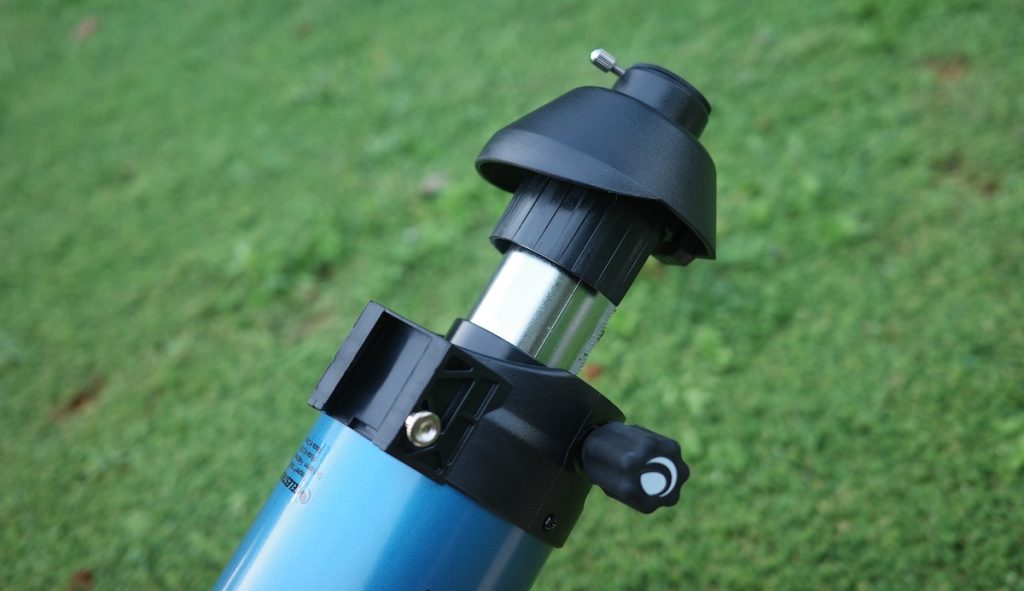
There’s also a “focus micrometer” on the side—a small window that shows a dial indicating a number (between 1 and 20) that lets us “set” the focus.
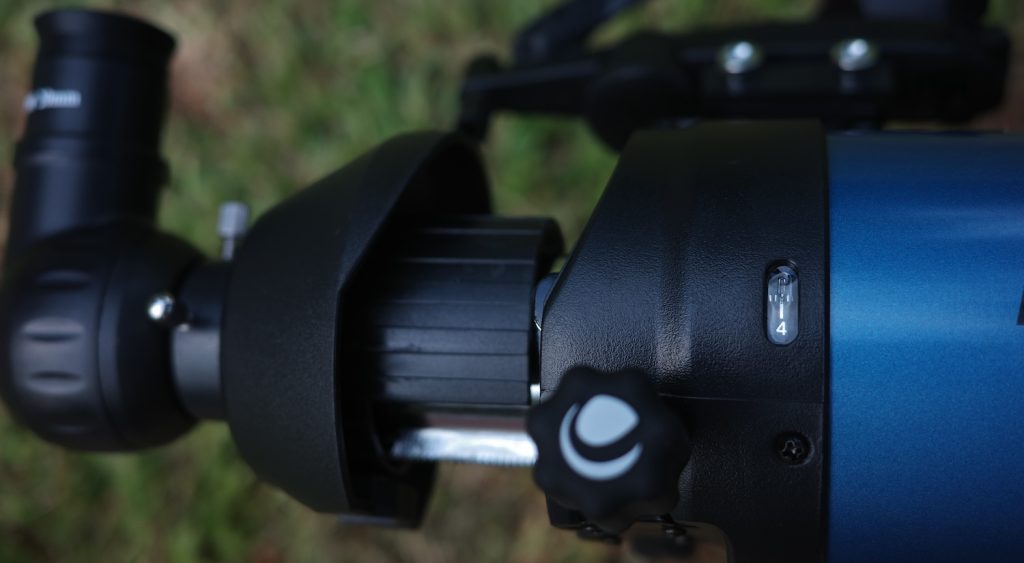
At best, the focus micrometer could be used as an extremely counterintuitive reference to save half a second on focusing with individual eyepieces. My other issues with it are that the “micrometer” is very small, located on the side of the telescope, and isn’t lit up in any way. In total, I consider it just a decoration that doesn’t do anything. Why Celestron elected to include this, I simply don’t know.
Another thing I dislike about the whole thing is that the focus knobs are made unusually small so that they don’t get in the way of this focus micrometer. This makes it a little harder for me to finely focus the 100AZ than it would be otherwise.
Most other 100/102mm refractors I’ve tested featured a 2” focuser without any weird design hangups, and it’s a shame the Inspire lacks one, as it would’ve really opened up possibilities for wide-field viewing of deep-sky objects.
Accessories
The Inspire 100AZ includes two standard, interchangeable 1.25” eyepieces: a 20mm Kellner providing 33x magnification and a 10mm Kellner providing 66x magnification. These are all-plastic in construction (the lenses are, thankfully, glass) and worked well when I tried them.
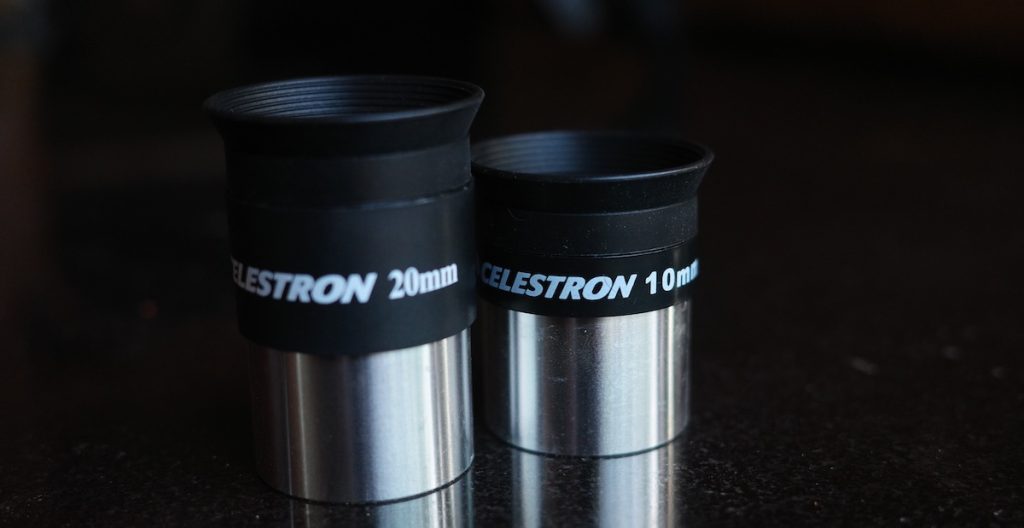
However, you’ll probably want additional eyepieces to get the most out of this telescope—both at the low-power end for wide-field vistas of deep-sky objects and at the high-power end for viewing the Moon and planets.
The Amici Diagonal
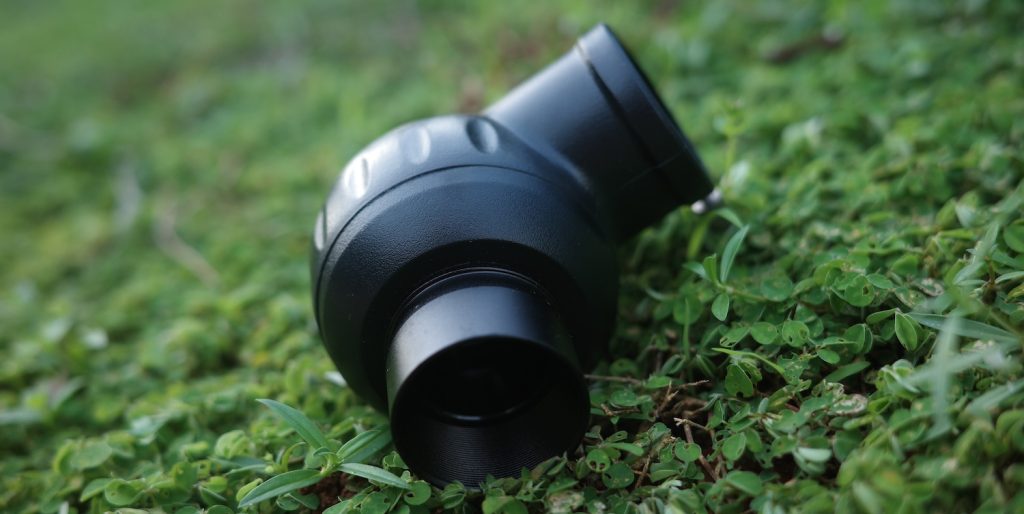
The included 1.25″ mostly-plastic star diagonal has an Amici erecting prism design, which makes sure that the images are correct both left to right and up to down. Unless you plan on frequently reading signs and snooping on people’s reading material from a distance, I’d call this feature essentially worthless, and it comes at a cost, too.
Due to the way it works, any Amici erecting prism produces annoying bright spikes, glare, and additional chromatic aberration on bright targets—which doesn’t help when there are already glare issues with the dew shield and chromatic aberration from the objective lens itself to begin with.
The Tricky-to-use Finder
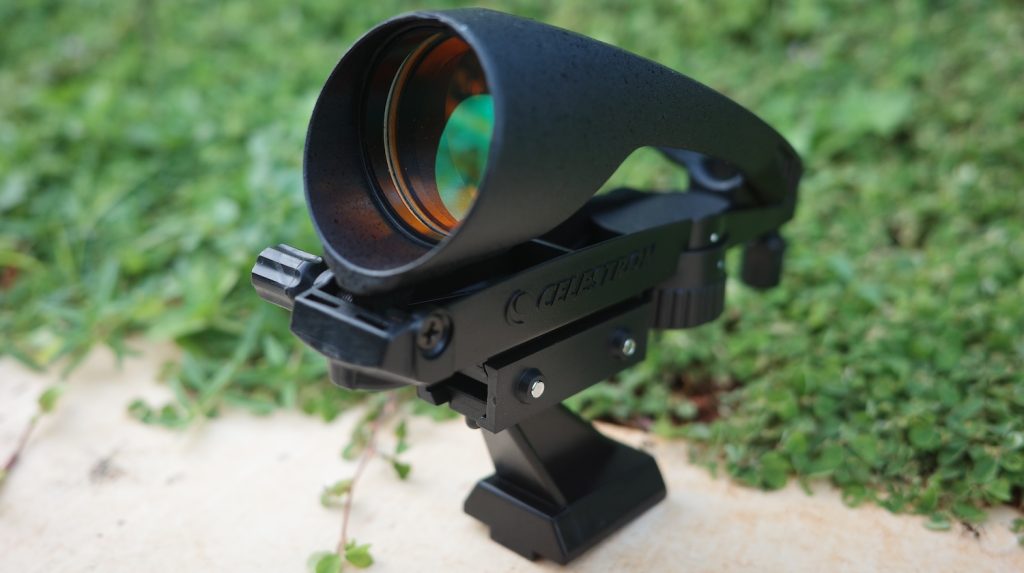
The StarPointer Pro red dot finder is advertised as an improvement over Celestron’s standard “StarPointer” (itself a generic red dot finder like the kind sold with many beginner telescopes). But I see it as basically a failed attempt to copy the Telrad.
The StarPointer Pro has two circles instead of a dot in the middle, both of which are exceedingly wide. I find it somewhat hard to actually center anything in the finder, or align it precisely, or keep it aligned with the telescope particularly well.
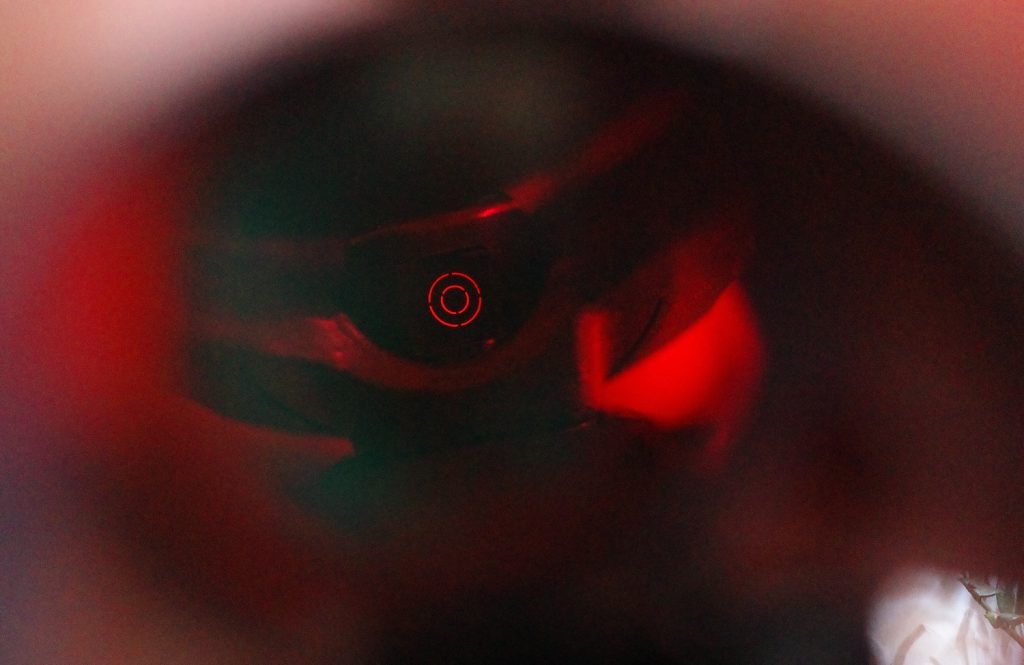
For a telescope like the Inspire 100AZ, which has a short focal length and a wide field of view as a result, it works well enough to get most targets in the field of view. But if you’re hunting for faint fuzzies that you might not recognize at first glance, I might recommend replacing the StarPointer.
The Small Flashlight
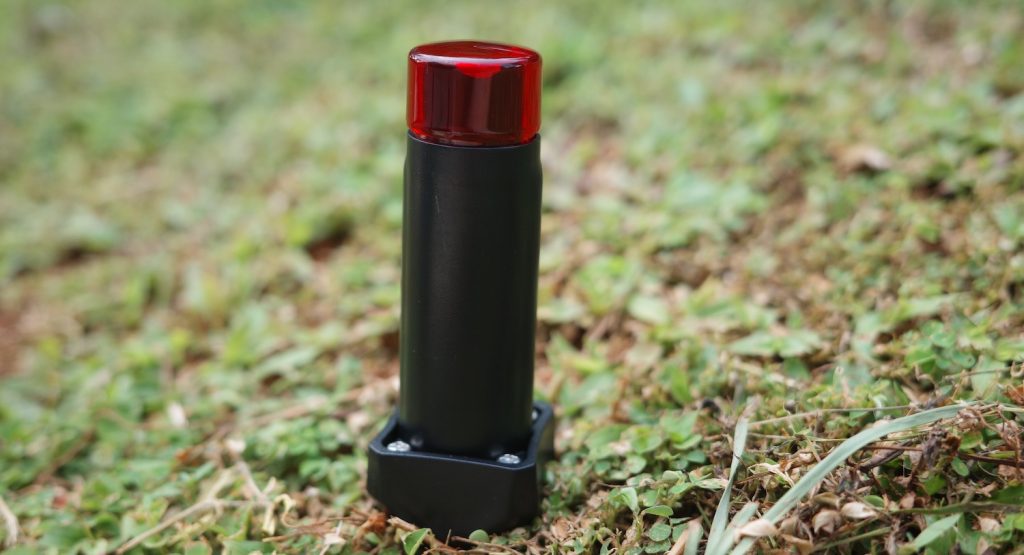
There’s also a small red flashlight included with the Inspire telescopes, which mounts to the center of the hub of the tripod below the mount head. I can detach it from the mount with the turn of a knob. It’s a little too bright to use as a plain flashlight at night, but the diffuser built into the tripod makes it into a really great tray light to softly illuminate my accessories without completely ruining my night vision.
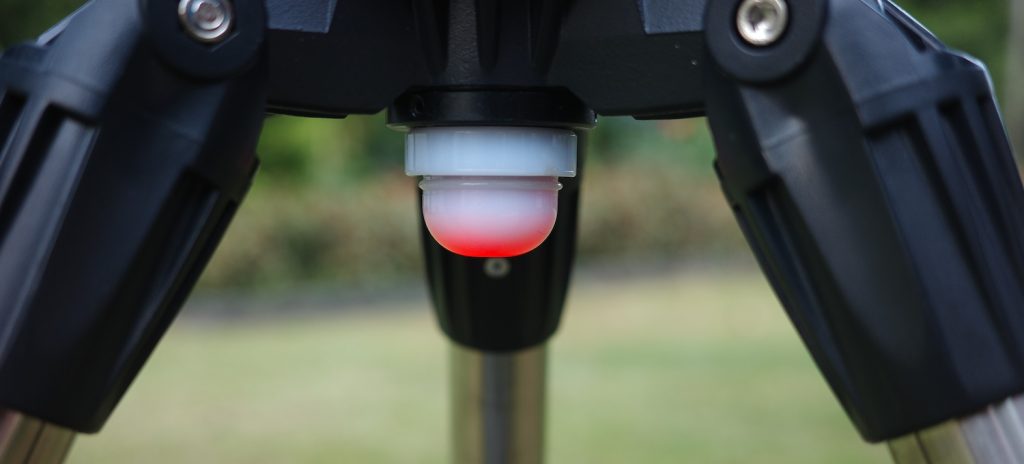
The Controversial Smartphone Adapter
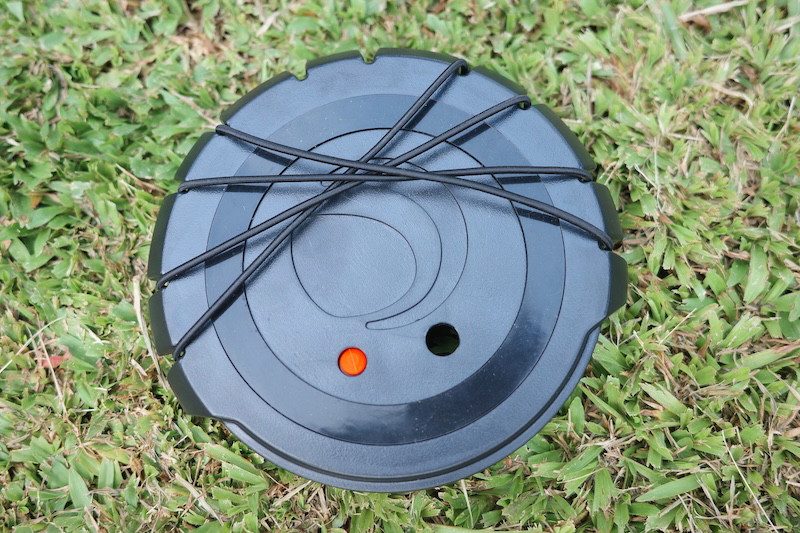
Lastly, and most controversially, is the lens cap/smartphone adapter. In my view, Celestron’s design here is straight up bizarre.
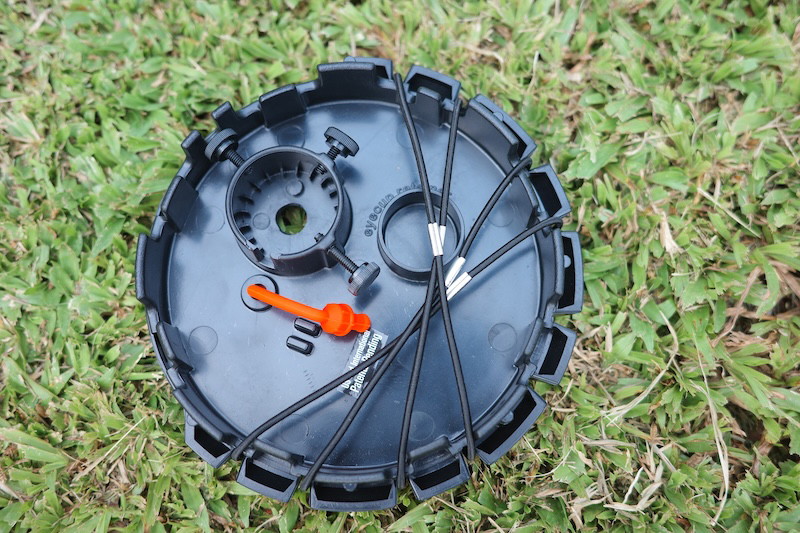
By removing a small plug from the cap and removing the eyecup from the eyepiece you want to use, then screwing the whole thing together with a small plastic screw, you can slide your smartphone between the elastic straps on the lens cap and use it as a crude “digiscoping” adapter for your smartphone.
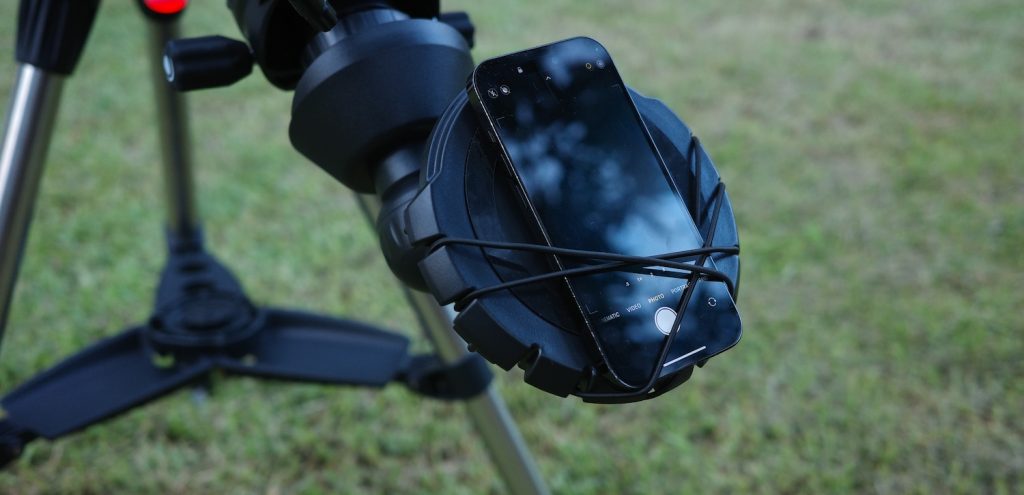
However, this has a few caveats.
- It doesn’t fit aftermarket eyepieces that don’t have a flush barrel and removable eyecup.
- It covers part of my phone’s screen, which makes it hard for me to set the focus and other phone camera features.
- I’m relying on some cheap elastic straps and a single nylon thumbscrew to keep my phone safe, which I’m not comfortable with.
I even find holding my phone up to the eyepiece with a steady hand to be nearly as good an option as using the Inspire’s included phone adapter. Dedicated smartphone adapters are not that expensive to buy aftermarket and will be a safer and easier-to-use option for your phone.
Alt-Azimuth Mount
The Inspire 100AZ’s mount is an alt-azimuth design that you aim up and down, and in this case, it is essentially a very beefed-up version of a camera tripod. The telescope sits outboard of the altitude axis on top of it. The tripod legs are tubular steel.
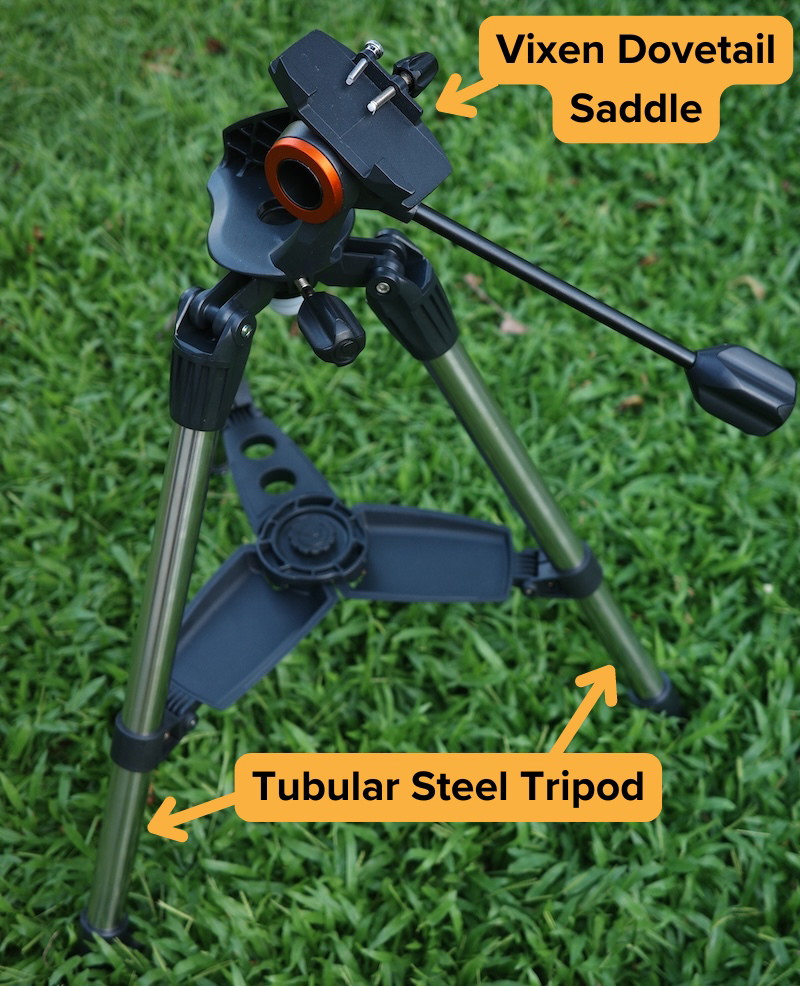
The optical tube attaches to the Inspire mount with a standard Vixen-style dovetail bar and saddle, so I could theoretically put another telescope on the mount. But the mount isn’t really capable of holding much weight besides another small refractor.
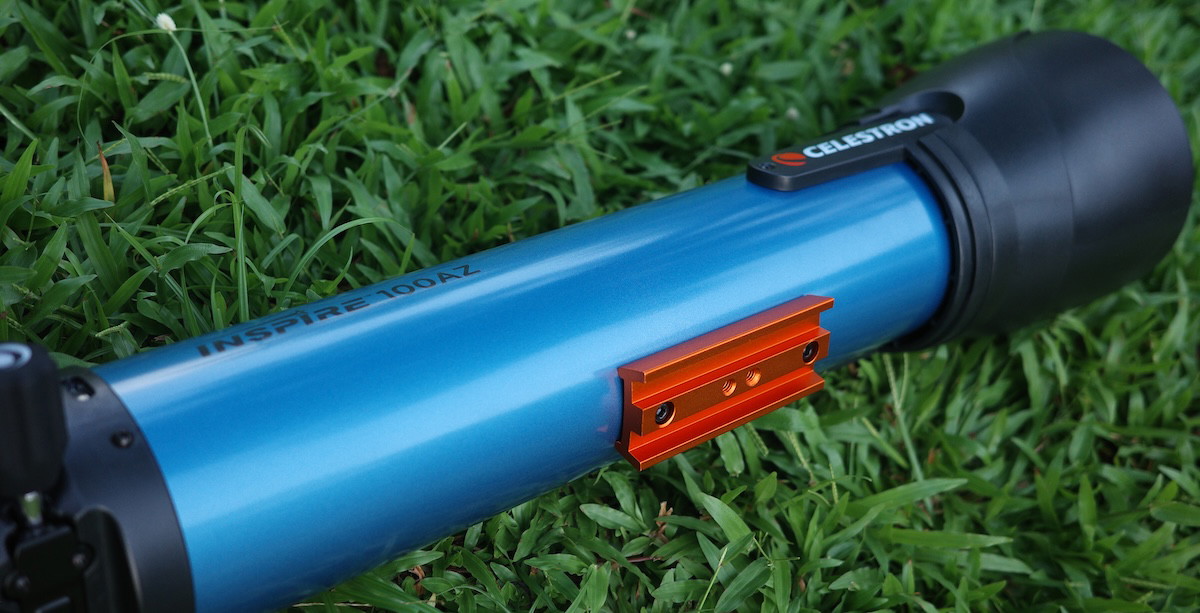
There are no fine adjustment or slow-motion control knobs, cables, or gears. The only control adjustments of any kind are a lock for the azimuth axis and a lock/handle for the altitude axis.
Believe it or not, despite the lack of fine adjustments and obviously non-astronomical design intent, the Inspire mount design works pretty well. With a longer or heavier telescope, a mount like the Inspire design would probably tip over and struggle to stay put unless almost completely locked on the altitude axis (hence why the Inspire 100AZ uses so much plastic), but it works just fine in this case. Making fine adjustments at high magnification takes some finesse and getting used to, but it does work pretty well. Not perfect, not as good as a Dobsonian, but well enough.
Unlike the vast majority of tripod-mounted telescopes that I’ve seen, which have some sort of accessory tray that requires an annoying process to secure to the legs, the Inspire 100AZ’s accessory tray is built into the tripod legs and just has to be locked into place when setting up the telescope.

As you can see in the above picture, I can actually hold accessories besides just eyepieces in the tray. It is also big enough to fit even a phone (which I can use as a star chart with an app like SkySafari), and the textured rubber on the tray gives me some peace of mind.
Should I buy a Used Celestron Inspire 100AZ?
A used Inspire 100AZ is a nice scope, but I’m mindful that if it’s not taken care of well, its many plastic parts could cause irreparable damage. Barring that, however, a used Inspire 100AZ will be fine if you can get it for a reasonable price. My recommendation is to never pay more than 80% of the new cost for a new telescope, eyepiece, or piece of astronomical gear.
Alternative Recommendations
The Inspire 100AZ is only an acceptable, but so-so telescope. I used to recommend the Inspire 100AZ as the best refractor you could get in its price range, but this has changed with the introduction of the Celestron DX 102AZ.
I would still recommend you consider a reflector instead, as very few refractors of acceptable quality exist in this price range. All comparable reflectors have larger apertures and, in some ways, better mounts and optics than the Inspire 100AZ. Here are some of my favorites:
- The Sky-Watcher Heritage 130P provides a significant boost in light gathering and resolving power over the Inspire 100AZ at the same focal length, free of chromatic aberration and with a sturdy, easy-to-use tabletop Dobsonian mount.
- The Celestron StarSense Explorer DX 102AZ uses the same optical tube and includes the same accessories as the Inspire 100AZ, but with an improved alt-azimuth mount that has slow-motion adjustments—further aided by Celestron’s StarSense Explorer technology to make aiming the telescope even easier.
- The Sky-Watcher Heritage 150P provides double the light-gathering ability of the Inspire 100AZ and 50% more resolution, all with no chromatic aberration or shaky tripod, and in a compact and portable package. The included accessories are well-made, and the tube collapses to make the telescope as easy to transport and store as possible. A computerized version, the Virtuoso GTi 150P, is also available.
- The Apertura AD6 has a 2” dual-speed Crayford focuser, double the light-gathering power, and 50% more resolving power than the Inspire 100AZ, mounted atop a full-sized and sturdy Dobsonian mount, which requires neither a table nor tripod to be used.
Aftermarket Accessory Recommendations
The Inspire 100AZ comes with a 10mm Kellner eyepiece providing 66x, but it can handle a fair bit more magnification than that—up to about 200x. As such, I might recommend a 6mm “gold-line” for 110x, which is probably all you really need for the Moon, planets, and double stars. A little more power (165x) can be achieved with a 4mm Aspheric or 4mm planetary eyepiece. You could also use a 2x Barlow with the 10mm for 132x or with the 6mm for 220x, which is usable, albeit a bit above what one should really be using with this telescope due to its aperture and optical quality.
I’d also recommend getting a different eyepiece than the 20mm Kellner that comes with the Inspire 100AZ. It has 33x magnification and a 1.5-degree field of view, which is about the size of 3 full moons. A good low-power eyepiece is a top recommendation on our list, as it will make finding deep-sky objects a lot easier, and, for the largest targets, a wider field of view frames them a lot better—the Andromeda Galaxy, the Double Cluster, and many of the objects in Sagittarius being prime examples.
A 40mm Plossl and 32mm Plossl provide the same field of view due to the limitations of the 1.25” barrel size, and the higher magnification of the 32mm means a bit more contrast under light-polluted skies with the Inspire 100AZ due to the smaller exit pupil. Almost any 32mm will do, and most of the cheaper ones are very similar, but we particularly like the 32mm Plossl from SVBONY, which is literally the same as the one Celestron sells at a significantly marked-up price.
Replacing the Inspire 100AZ’s included Amici prism star diagonal is a good idea if you plan on viewing the Moon and planets often. A cheap mirror diagonal provides distorted images due to often-low quality control; a nice dielectric mirror or prism is a good pick. Celestron actually sells a pretty nice prism star diagonal, which they include with their higher-end telescopes by default.
For medium magnification, which might be overkill, a 15mm gold-line is a good option. It will provide 44x with the Inspire 100AZ, which is good for viewing a lot of moderately sized deep-sky objects. The SVBONY 15mm 70-degree is a bit more comfortable, sharper, and offers a wider field of view, and the 15mm Agena Starguider is also a great choice if you’re willing to put up with the expense.
You might also want to think about getting an ultra-high-contrast, or “UHC,” nebula filter. This filter screws onto your eyepiece or star diagonal and makes many nebulae, like the Orion Nebula, stand out more. In some cases, it may make previously invisible nebulae easy to see, such as the Veil and Rosette. But it can’t replace the views or feeling of being under truly dark skies, and it can’t be used to look at galaxies, star clusters, or reflection nebulae.
Lastly, you could also replace the included StarPointer Pro reflex sight if you feel so inclined. A standard red dot finder is a lot easier to use and fairly inexpensive, though limited in usefulness when searching for fainter targets.
A straight-through 9×50 finder will provide magnified close-up views of the stars and reveal stars and deep-sky objects fainter than what you can see with your naked eye. However, it can be somewhat uncomfortable to look through. A right-angle finder is also an option and easier to look through, albeit heavy and expensive.
A Rigel QuikFinder is essentially just a superior version of the StarPointer Pro and attaches to the tube with adhesive tape, so you could use it in conjunction with a 9×50 finder if you wish. A Telrad is unfortunately too large to really fit on the Inspire 100AZ.
What can you see with the Celestron Inspire 100AZ?
The Inspire 100AZ works like a 114mm or so reflector because it doesn’t have any mirror surfaces that reflect light or anything in the middle that gets in the way.
A 100mm refractor has the capability to do a surprising amount of stuff. You won’t quite be able to resolve globular star clusters or see much in the way of detail in galaxies, even under dark skies, but the 100AZ can still show you the entirety of the Messier catalog and a wealth of detail on the Moon and planets.
- With the Inspire 100AZ, I can make out Mercury’s phases (albeit with some difficulty), and Venus’s phases are easy to see.
- There’s a ton of detail on the Moon, with craters and ridges as small as a few miles visible at high magnification on a steady night.
- Mars’ polar caps and a dark marking or two are visible, as are any dust storms that occur on the planet.
- Jupiter’s moons are just barely able to be resolved as tiny dots, with inky black shadows following them when they transit the planet. Jupiter itself displays a few cloud bands, some smaller storms if any are present, and, of course, the Great Red Spot, though it is becoming less and less great as it shrinks and its color ranges from white to pink.
- With the Inspire 100AZ, it’s easy to see Saturn’s rings, the Cassini Division inside them, and a few cloud bands on the planet itself, though they aren’t very colorful and just look like symmetrical stripes. A few of Saturn’s moons can also be seen, with Titan being the brightest among them. Rhea, Tethys, and Dione are easy to spot; Enceladus and Iapetus are tougher.
- Uranus and Neptune aren’t very interesting to look at with the Inspire 100AZ because it’s hard to tell them apart from stars, their disks are so small that you can barely see them, and their moons are just too dim to see with a 100mm telescope.
Outside the solar system, what you can see with the Inspire 100AZ broadly depends on your sky conditions.
Under a light-polluted sky, I’m basically limited to seeing the cores of the brightest galaxies, open star clusters, and some of the brightest nebulae.
With good skies, however, I can see a lot more. Keep in mind that I’m not asking for perfection—what I’m talking about is being able to at least somewhat make out the Milky Way.
- Under skies like these, open star clusters explode into colorful gobs of stars straddled by dark dust lanes.
- Nebulae like Orion look spectacular, and with a good filter, I can view the supernova remnant in Cygnus known as the Veil, which stretches across an area of sky 10 times the width of the full Moon.
- Globular star clusters look vaguely grainy, but they are beyond the resolving power of a 100mm telescope—albeit barely.
- Under dark skies, I can see the Andromeda Galaxy’s long shape and one or two dust lanes. I can also see its two companion galaxies, M32 and M110. M33, the Triangulum Galaxy, has somewhat visible spiral arms, as does M81. M82’s dust lanes are obvious. I’m even able to vaguely tell that M51 and M101 are spirals, though it’ll be tough. And galaxy groups like the Virgo Cluster and Leo Triplet are visible as well, although rather dim and devoid of detail.

